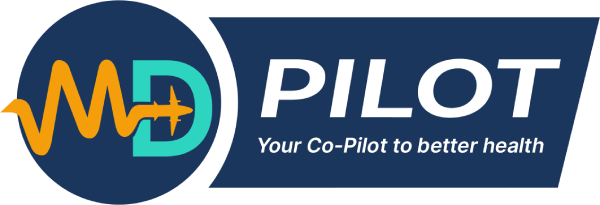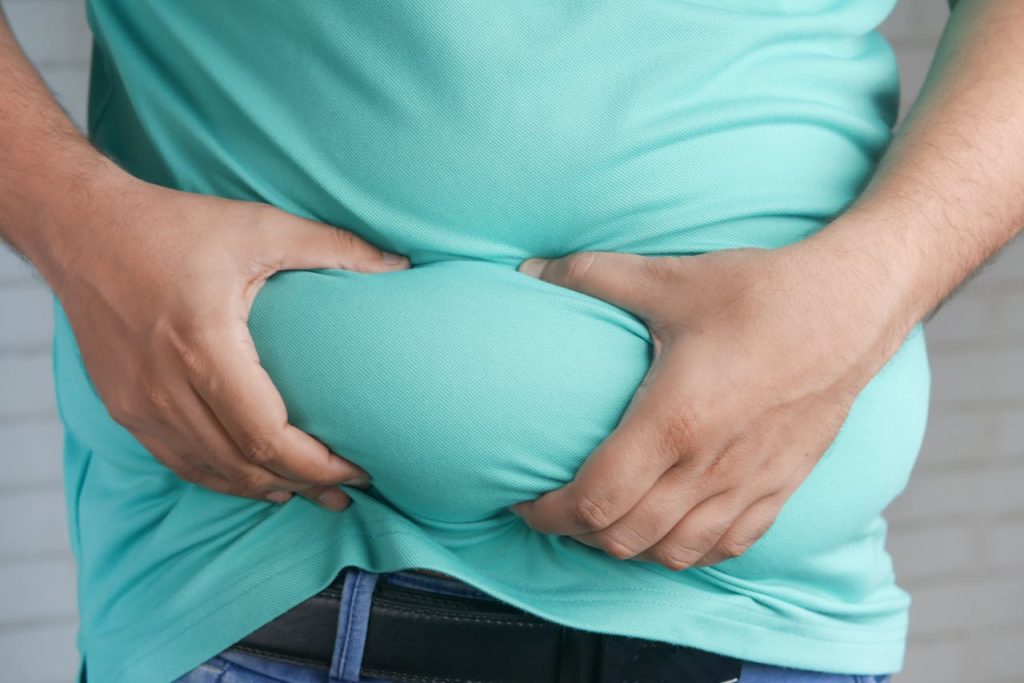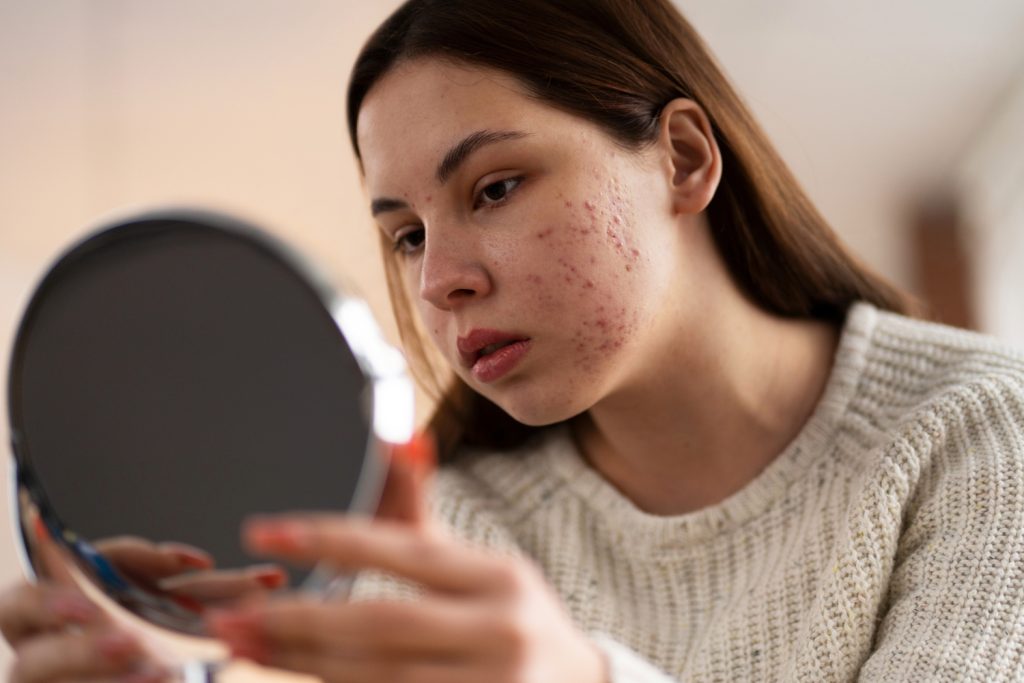Table Of Contents
-
Key Highlights
- How High Blood Sugar Triggers Headaches — The Science Explained
- Recognizing High Blood Sugar Headaches: Symptoms and Warning Signs
- High Blood Sugar vs. Low Blood Sugar Headaches
- What Increases Your Risk? Common Triggers and Prevention
- Managing and Preventing Diabetes-Related Headaches
- When to Seek Help: Red Flags and Complications
-
Frequently Asked Questions
-
Conclusion
-
References and Sources
Key Highlights
- High blood sugar headaches are common: Up to 30% of people with diabetes experience frequent headaches related to poor glucose control
- Multiple triggers exist: Hyperglycemia causes headaches through inflammation, osmotic changes, and nerve effects in the brain
- Symptoms vary but follow patterns: These headaches typically present as throbbing pain, often accompanied by fatigue, blurred vision, and confusion
- Both highs and lows matter: While this article focuses on high blood sugar, both hyperglycemia and hypoglycemia can trigger headaches with different characteristics
- Management is key: Proper blood glucose control, hydration, and medication adherence can reduce headache frequency by over 50%
- Warning signs require attention: Severe or persistent headaches may signal dangerous complications like diabetic ketoacidosis (DKA)
- Tracking helps: Keeping a headache diary alongside blood sugar logs can reveal patterns and improve treatment outcomes
How High Blood Sugar Triggers Headaches — The Science Explained
Understanding how high blood sugar causes headaches requires looking at the complex physiological changes that occur when glucose levels become elevated. When your blood sugar rises significantly above normal levels, several mechanisms can trigger headache pain.
Osmotic and Fluid Balance Changes
High glucose levels create osmotic imbalances in your brain tissue. As glucose concentrations increase in your bloodstream, water moves out of brain cells to balance the concentration gradient. This cellular dehydration can cause brain tissue to shrink slightly, putting tension on blood vessels and nerve endings that register as headache pain.
Inflammatory Response
Chronic hyperglycemia triggers inflammatory pathways throughout your body, including in the brain. Studies show that elevated glucose levels activate inflammatory markers like C-reactive protein and interleukin-6, which can sensitize pain pathways and contribute to diabetes headache causes.
Vascular Effects
High blood sugar affects the delicate blood vessels in your brain. Glucose can damage the endothelial lining of blood vessels, leading to changes in blood flow and vessel dilation that commonly trigger headaches. This vascular component explains why many people describe their hyperglycemia symptoms as throbbing or pulsating pain.
Blood Sugar ➝ Headache Connection
- High Glucose (>180 mg/dL)
- ➝
- Osmotic Changes
- ➝
- Brain Cell Dehydration
- ➝
- Headache Pain
- Chronic Hyperglycemia
- ➝
- Inflammation
- ➝
- Pain Pathway Sensitization
- ➝
- Recurring Headaches
Recognizing High Blood Sugar Headaches: Symptoms and Warning Signs
Learning to recognize symptoms of hyperglycemia headache can help you take prompt action to prevent more serious complications. These headaches have distinct characteristics that differentiate them from other types of headaches.
Primary Headache Characteristics
- Throbbing or pulsating pain: Most commonly felt in the temples or across the forehead
- Gradual onset: Unlike sudden-onset headaches, these typically develop over hours as blood sugar rises
- Bilateral location: Often affects both sides of the head rather than one side
- Moderate to severe intensity: Pain level often correlates with how high blood sugar has risen
Associated Symptoms
High blood sugar headaches rarely occur in isolation. Watch for these accompanying hyperglycemia symptoms:
- Excessive thirst (polydipsia) and frequent urination
- Blurred vision or difficulty focusing
- Fatigue and weakness
- Nausea and sometimes vomiting
- Confusion or difficulty concentrating
- Fruity breath odor (a sign of ketones)
Timing Patterns
Understanding when these headaches occur can help with identification:
- Post-meal headaches: Often develop 1-3 hours after eating high-carbohydrate meals
- Morning headaches: May occur due to dawn phenomenon (natural morning blood sugar rise)
- Stress-related episodes: Physical or emotional stress can trigger both high blood sugar and headaches
 When to Seek Immediate Medical Attention
When to Seek Immediate Medical Attention
Seek emergency care if you experience severe headaches with:
- Blood glucose over 300 mg/dL
- Persistent vomiting
- Fruity breath odor
- Rapid breathing or difficulty breathing
- Severe confusion or loss of consciousness
These may be signs of diabetic ketoacidosis (DKA), a life-threatening condition.
High Blood Sugar vs. Low Blood Sugar Headaches
Both high and low blood sugar can cause headaches, but understanding the differences helps you respond appropriately. Here’s a detailed comparison to help you identify which type you’re experiencing:
| Aspect | High Blood Sugar Headaches | Low Blood Sugar Headaches |
|---|---|---|
| Onset Speed | Gradual (develops over hours) | Rapid (develops within minutes) |
| Pain Type | Throbbing, persistent | Sharp, intense, pounding |
| Associated Symptoms | Thirst, frequent urination, blurred vision | Shakiness, sweating, anxiety, hunger |
| Blood Glucose Level | Usually >180 mg/dL | Usually <70 mg/dL |
| Duration | Persists until glucose is controlled | Resolves quickly after glucose treatment |
| Treatment Response | Improves with glucose lowering | Improves with glucose raising |
Why the Difference Matters
Recognizing whether you’re dealing with low blood sugar headache vs high is crucial because the treatments are opposite. Treating a high blood sugar headache with glucose tablets (meant for low blood sugar) can worsen the situation and potentially lead to dangerous complications.
What Increases Your Risk? Common Triggers and Prevention
Several factors can increase your likelihood of developing headaches and blood sugar problems. Understanding these triggers empowers you to take preventive action.
Primary Risk Factors
- Poor glucose control: Consistently elevated HbA1c levels (>7%) significantly increase headache risk
- Medication non-adherence: Skipping or inconsistent use of diabetes medications
- Dietary factors: Large meals, high-carbohydrate foods, irregular eating patterns
- Dehydration: Insufficient fluid intake compounds the effects of high blood sugar
- Physical or emotional stress: Both types can trigger stress hormones that raise blood glucose
- Illness or infection: The body’s response to illness often elevates blood sugar levels
Lifestyle Triggers to Watch
Common daily situations that can lead to blood sugar fluctuations and subsequent headaches include:
- Consuming sugary drinks or snacks
- Sleeping poorly or having irregular sleep schedules
- Missing meals or eating irregularly
- Lack of physical activity
- Certain medications (steroids, some antibiotics)
Prevention Strategies
Implementing these strategies can significantly reduce your risk of developing hyperglycemia-related headaches:
- Monitor blood glucose regularly: Check levels before and after meals, especially if you’re prone to headaches
- Stay hydrated: Aim for 8-10 glasses of water daily
- Follow medication schedules: Set reminders to ensure consistent timing
- Practice portion control: Use the plate method (half vegetables, quarter protein, quarter carbohydrates)
- Manage stress: Try meditation, regular exercise, or other stress-reduction techniques
Managing and Preventing Diabetes-Related Headaches
Effective managing diabetes headaches involves a multi-faceted approach focusing on glucose control, lifestyle modifications, and symptom management. Research shows that well-controlled diabetes can reduce chronic headache risk by over 50%.
Immediate Management Strategies
When you’re experiencing a headache related to high blood sugar:
- Check your blood glucose: Confirm the level and document it
- Hydrate: Drink water slowly but steadily
- Take prescribed medication: Follow your healthcare provider’s instructions for correcting high blood sugar
- Rest in a quiet, dark room: Minimize additional headache triggers
- Monitor for improvement: Headaches should begin to resolve as blood sugar normalizes
Long-term Prevention Approaches
The most effective way to prevent diabetes headache relief is through comprehensive glucose management:
Medication Management
- Take medications exactly as prescribed
- Discuss any side effects with your healthcare team
- Regular medication reviews and adjustments as needed
- Consider continuous glucose monitoring for better control
Dietary Strategies
- Follow a consistent meal schedule
- Count carbohydrates and understand their impact
- Choose complex carbohydrates over simple sugars
- Include protein and healthy fats in each meal
- Avoid foods that cause rapid blood sugar spikes
Lifestyle Modifications
- Engage in regular physical activity (150 minutes per week minimum)
- Maintain a healthy sleep schedule (7-9 hours nightly)
- Practice stress management techniques
- Avoid tobacco and limit alcohol consumption
Tracking and Monitoring
Keep a headache and blood sugar diary including:
- Time and severity of headaches
- Blood glucose levels before, during, and after headaches
- Foods eaten and timing
- Medication timing
- Stress levels and sleep quality
- Physical activity
This information helps your healthcare team identify patterns and adjust your treatment plan.
When to Seek Help: Red Flags and Complications
While most high blood sugar headaches can be managed at home with proper glucose control, certain situations require immediate medical attention. Understanding these red flags can be life-saving.
Emergency Warning Signs
Seek immediate emergency care if headaches are accompanied by:
- Blood glucose over 300 mg/dL that doesn’t respond to usual treatment
- Ketones in urine or blood (indicated by test strips or blood ketone meter)
- Persistent vomiting preventing fluid or medication intake
- Severe dehydration with dizziness, rapid heartbeat, or dry mouth
- Confusion, disorientation, or altered mental status
- Difficulty breathing or rapid breathing
- Fruity or acetone breath odor
Diabetic Ketoacidosis (DKA) Connection
Severe headaches can be an early warning sign of DKA, a life-threatening condition that occurs in 2-5% of people with diabetes. Diabetic ketoacidosis symptoms almost always include headache as a prominent feature, along with:
- Blood glucose typically over 250 mg/dL
- High levels of ketones in blood or urine
- Severe nausea and vomiting
- Abdominal pain
- Rapid, deep breathing (Kussmaul breathing)
When to Contact Your Healthcare Provider
Schedule an appointment if you experience:
- Frequent headaches (more than 2-3 times per week)
- Headaches that worsen despite blood sugar control efforts
- New onset headaches in previously well-controlled diabetes
- Headaches interfering with daily activities
- Need for medication adjustments due to persistent high blood sugar
Special Considerations for Children
Children with diabetes may present differently. Can children get headaches from blood sugar? Yes, and pediatric symptoms often include:
- Irritability or behavior changes
- Difficulty concentrating in school
- Complaints of stomach aches along with headaches
- Changes in eating or sleeping patterns
Parents should maintain close communication with pediatric endocrinologists and school nurses.
Frequently Asked Questions
Yes, anyone can experience headaches from elevated blood sugar, even without a diabetes diagnosis. This often occurs after consuming large amounts of sugar or refined carbohydrates, during illness, or in people with prediabetes. If you’re experiencing frequent headaches with symptoms like excessive thirst and urination, consider getting tested for diabetes.
High blood sugar headaches typically present as a throbbing or pulsating pain, often affecting both sides of the head. They develop gradually over hours and are usually accompanied by other hyperglycemia symptoms like thirst, blurred vision, and fatigue. Unlike tension headaches, they don’t improve with rest alone and require blood sugar management.
The duration depends on how quickly you can normalize your blood glucose levels. With proper treatment (medication, hydration, and avoiding additional carbohydrates), headaches typically begin improving within 2-4 hours as blood sugar drops. Complete resolution may take 6-12 hours, especially if blood sugar was significantly elevated.
Frequent headaches can indicate poor glucose control, which increases the risk of diabetes complications over time. However, headaches themselves aren’t typically a direct sign of complications like neuropathy or retinopathy. They’re more often a symptom of acute hyperglycemia that needs immediate attention to prevent more serious issues like DKA.
Check your blood glucose when you have a headache. If it’s above 180 mg/dL and you have other hyperglycemia symptoms (thirst, frequent urination, blurred vision), it’s likely related to high blood sugar. Keep a headache diary noting glucose levels, timing, and associated symptoms to identify patterns. Consult your healthcare provider if you’re unsure.
Yes, studies show that good glucose control can significantly reduce headache frequency in people with diabetes. Some research suggests that glucose fluctuations may trigger migraines even in non-diabetics. If you have both diabetes and chronic headaches, working with both an endocrinologist and neurologist can provide comprehensive management strategies.
Seek immediate care if headaches occur with blood glucose over 300 mg/dL, persistent vomiting, fruity breath odor, or confusion. Schedule a regular appointment if you experience headaches more than 2-3 times weekly, if they’re worsening despite blood sugar control efforts, or if they significantly impact your daily activities.
Conclusion
High blood sugar headaches are a common but manageable symptom that affects up to 30% of people with diabetes. Understanding the connection between hyperglycemia and headaches empowers you to take control of your symptoms and prevent complications.
The key takeaways for managing these headaches effectively include maintaining consistent blood glucose levels through proper medication adherence, following a balanced diet, staying hydrated, and monitoring your levels regularly. Remember that both the timing and characteristics of your headaches can provide valuable information about your glucose control.
Most importantly, don’t ignore persistent or severe headaches, especially when accompanied by other concerning symptoms. Early intervention and proper management can not only resolve your immediate discomfort but also prevent more serious complications like diabetic ketoacidosis.
Take action today by implementing the blood glucose management strategies discussed in this article. Start keeping a headache and glucose diary, review your medication schedule with your healthcare provider, and make any necessary lifestyle adjustments. Your future self will thank you for taking these proactive steps toward better health and fewer headaches.
What’s your experience with blood sugar headaches? Have you noticed patterns between your glucose levels and headache frequency? Share your insights and continue the conversation about effective diabetes management strategies.
References and Sources
- Mississippi Valley State University – Having Diabetes Headaches? – Comprehensive overview of headache connection and practical management advice for diabetes patients.
- University of Washington DataLab – Symptoms of Diabetes Hyperglycemia – Educational resource detailing hyperglycemia symptoms including headache presentations.
- Georgia Tech UROP – Does Diabetes Cause Headaches? – Research-based analysis of diabetes-headache relationship with medical explanations and management recommendations.
- NCBI/Medline – Type 2 Diabetes Comprehensive Reference – Authoritative medical source covering diabetes symptoms, complications, and management strategies.
- Centers for Disease Control and Prevention – Diabetic Ketoacidosis – Official CDC guidance on DKA recognition, treatment, and prevention, highlighting headache as a key symptom.
- UPMC Children’s Hospital – High Blood Sugar – Pediatric-focused resource on hyperglycemia symptoms and management in children and adolescents.
- PubMed – Headache and Diabetes Review – Peer-reviewed research examining the clinical relationship between diabetes and headache disorders.
- PMC – Pathophysiologic Mechanisms of Diabetes-Related Headaches – Academic review of the biological mechanisms linking hyperglycemia to headache development.
- MedlinePlus – Hyperglycemia – General medical information on high blood sugar symptoms, causes, and treatment from the National Library of Medicine.
- PMC – Insulin Resistance and Migraine Frequency Study – Research examining the connection between insulin resistance and headache patterns in diabetic patients.
- PMC – Prevalence of Headaches in Diabetic Patients (2016) – Epidemiological study providing statistics on headache frequency and patterns in people with diabetes.
Disclaimer:
The information provided on MD-Pilot is for educational and informational purposes only. It is not intended as a substitute for professional medical advice, diagnosis, or treatment. Always seek the advice of your physician or other qualified healthcare provider with any questions you may have regarding a medical condition. Never disregard professional medical advice or delay in seeking it because of something you have read on this website.
Recomended Articles
View AllWeekly Health Intel
Get evidence-based health tips, latest research, and exclusive guides delivered weekly




